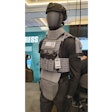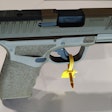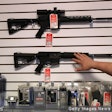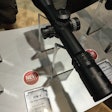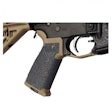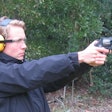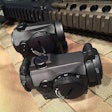 Photo of Beretta 92F courtesy of Wikimedia.
Photo of Beretta 92F courtesy of Wikimedia.
Sales for S&W model 5900s and Beretta model 92s took off. Slide-mounted de-cocking levers would safely drop the hammer and put the pistol back into double action. Law enforcement training evolved to meet the needs of agencies making the switch from "wheel guns" to double-action semi-autos. New manipulations and malfunction drills were needed to ensure the old wheel gun officers could keep these semi-automatics running and correctly operate the de-cocking levers.
By the late '80s and early '90s, most major police agencies had transitioned their officers to these new double-action semi-autos with weekly in-service training classes. At the same time, Glock entered the market, eventually opening a manufacturing plant in Smyrna, Ga.
S&W and Beretta held the lion's share of the law enforcement market at the time, and many agencies were reluctant to look at another type of duty handgun. Large law enforcement agencies like the Los Angeles Police Department and the Los Angeles County Sheriff's Department were happy with the performance of their duty issue 9mm Beretta model 92 pistols. Even the U.S. Border Patrol selected a Beretta 96D after extensive testing for their duty pistol.
Glock worked hard to establish a law enforcement foothold in the '90s and eventually the company's polymer pistols caught on. The pistol was simple to operate and repair. It offered one type of short trigger press and higher ammunition capacity. Operators needed fewer weapon manipulation skills because the pistols didn't have slide- or frame-mounted de-cocking levers.
As a trainer, teaching police personnel one type of trigger press is better in many ways for officers than training for two types. What's not to like? More training time could now be used for combat skills. S&W initially tried to counter the coming Glock landslide with the Sigma, which was similar only in action type to Glock's semi-auto. The Sigma didn't catch on and has since been reengineered.
At the present time, only a few agencies still issue Beretta or S&W double-action pistols. A few large federal agencies such as U.S. Customs and Border Protection, including the Border Patrol, have opted for a frame-mounted de-cocking lever. They maintain that the double-action semi-auto is safer for their agents. Last time I checked, the Border Patrol was issuing H&K P2000 series handguns.
S&W has produced the M&P model that has been well received in the police community. Springfield XD models have established a limited foothold with police. The 1911 pistol remains popular as an alternate duty weapon, including with the LAPD, and agencies such as the Long Beach (Calif.) Police Department train with it as the primary academy duty weapon.
In view of the currently available semi-auto models from Glock, S&W, and Springfield, use of double-action pistols has become much more limited. If your agency is still issuing the Beretta 92 series or S&W 3900, 4500, or 5900 series double-action pistol with slide-mounted de-cocking levers, let us know by commenting below.









